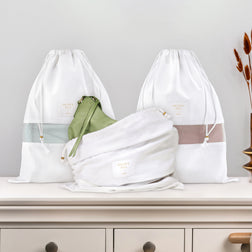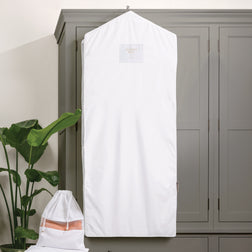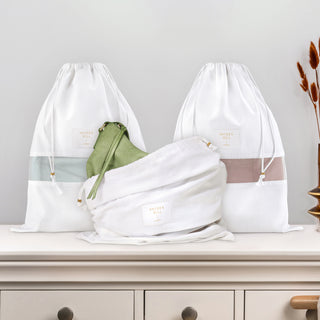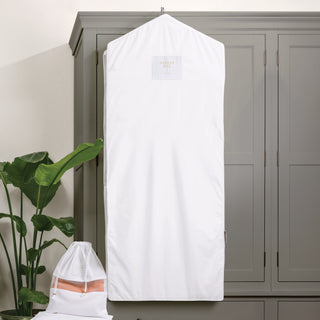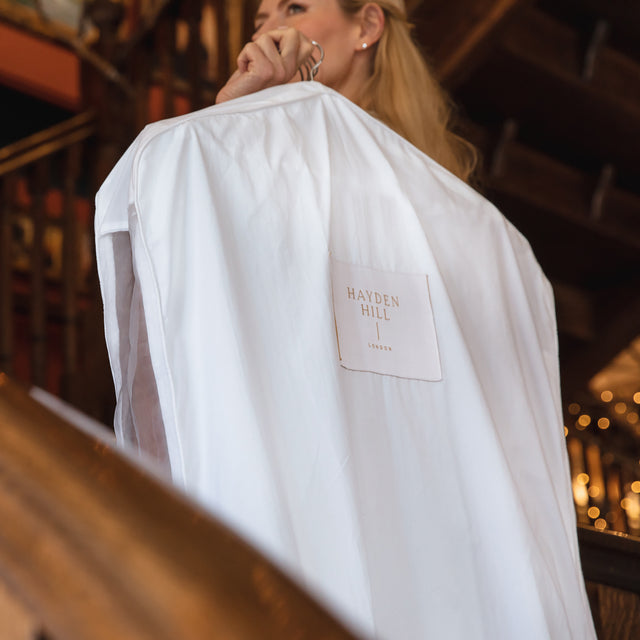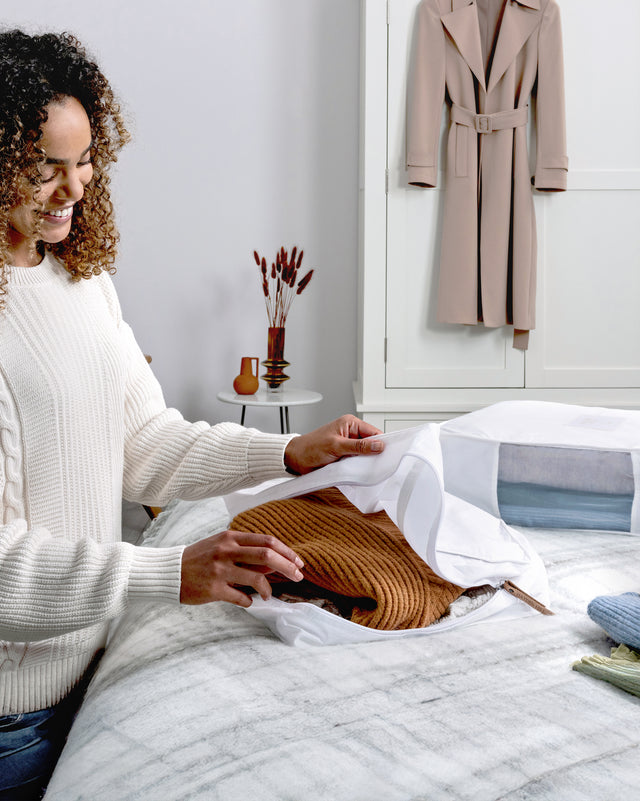100% Cashmere vs. Cashmere Blends - what is the difference between these two types of fabrics? Are these cashmere blends completely without merit? Should you always choose 100% pure cashmere over a blend? Read our article to find out.
Cashmere has been a staple in the fashion world for decades. But it’s not only fashion enthusiasts who want to fill their winter wardrobes with cashmere’s luxurious softness. Now, everyone from working professionals to stay-at-home moms are shopping for cashmere sweaters and coats.
To meet the increased demand, many manufacturers and fashion designers have turned to cashmere blends. Because of cashmere blends, you can now find cashmere sweaters for less than $100.
So, are these cashmere blends completely without merit? Should you always choose 100% pure cashmere over a blend?
Let’s take a deeper look at the differences between pure cashmere and blends to help you make more informed purchases.
What is 100% Cashmere?
Cashmere is made of goat’s hair, but not just any goat hair. In the Kashmir Valley, between the borders of India and Pakistan, lives a breed of goat prized for its soft undercoat and sturdy guard hairs. When gathered, cleansed, and spun into yarn for weaving textiles, these goat hairs create the world’s most luxurious wool: cashmere.
100% cashmere is made entirely of cashmere goat hairs.
Cashmere Fiber Quality
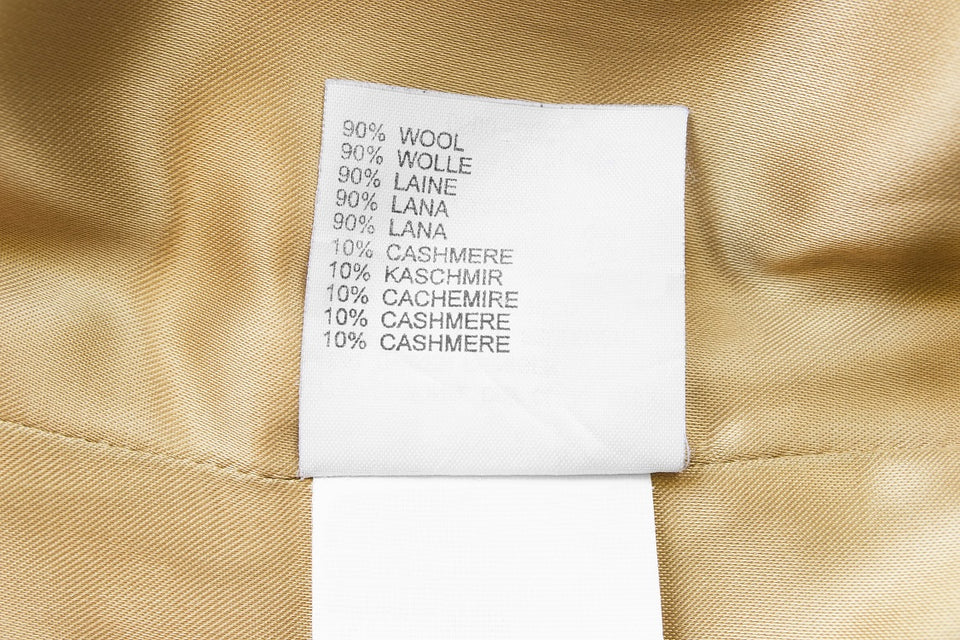
However, it’s very common for cashmere to be blended with another wool or a mixture of different grades of cashmere.
The differences in the quality of cashmere are articulated as “grades.” The cashmere grades are:
Grade C Cashmere
The lowest quality of cashmere is Grade C. Cashmere of this grade has fibers that are thicker than average, with a diameter of about 30 microns. Grade C cashmere is also the cheapest.
Grade B Cashmere
The fibers of the second tier of cashmere are a bit thinner, averaging around 19 microns.
Grade A Cashmere
Grade A is the most expensive of all cashmere, because it is the thinnest, longest, and most durable. The diameter of Grade A cashmere is 14 microns, and the length is around 36mm.
Grade A cashmere is costly because of its fiber strength despite its thinness. The garment is more durable, and consequently, has more longevity.
There are also differences in how the fibers wear. Higher quality cashmere pills less than lower grades, and they retain their shape much better. Plus, finer cashmere is infinitely softer.
You can find a cashmere scarf for sale at a boutique for anywhere from $12 to $5,000. This happens because of the grade differences. 100% Grade A cashmere costs more than 100% Grade C cashmere. Yet both are 100% cashmere.
100% Cashmere vs. Cashmere Blends
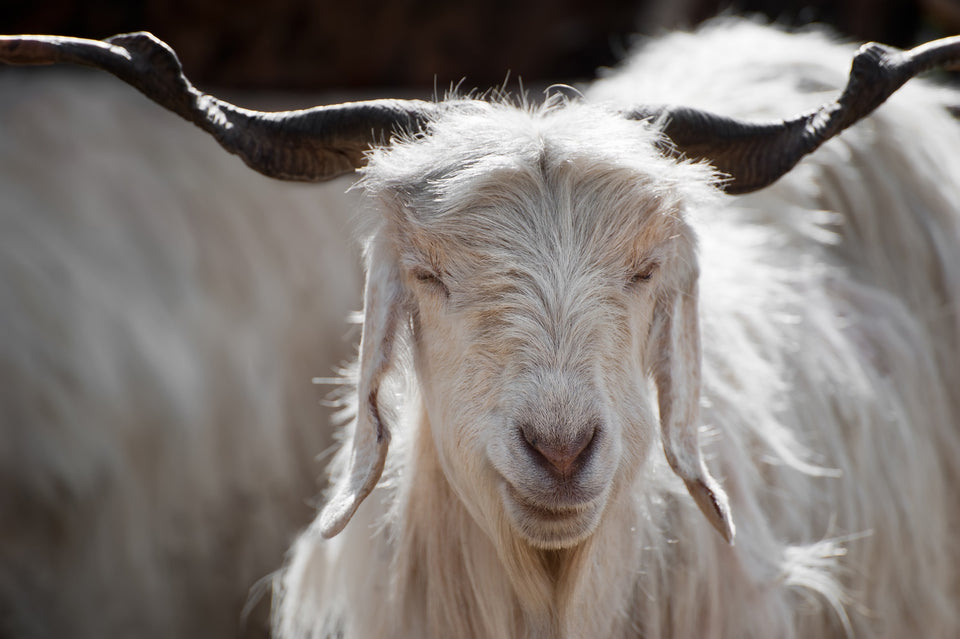
Items that are cashmere blends are made of cashmere and another fabric. Cashmere is blended with other fabrics not only to make it less expensive to mass produce, but also to enhance the properties of the fabric.
An item that is a cashmere blend does not always indicate lesser quality.
Silk Cashmere
As the name suggests, this is a blend of silk and cashmere. Both silk and cashmere are luxurious fabrics that are soft and breathable. When silk is blended in with cashmere, it makes a garment easier to produce but still retains the insulating qualities of the cashmere wool. And, while pure silk wrinkles easily, blending it with cashmere reduces the likelihood of wrinkling. Silk also helps mitigate cashmere’s tendency to stretch, keeping the shape of the garment longer.
Overall, a silk-cashmere blend can be deemed an enhancement over pure cashmere, if slightly less insulation is acceptable. The price can also be more reasonable than 100% cashmere. Silk is a delicate and luxurious fabric, so the feel of the garment is still incredibly soft.
Cotton Cashmere
Far less expensive than pure cashmere, cotton cashmere is also much less insulating. Since cotton is the opposite of cashmere in many ways, it tends to negate cashmere’s insulating properties. But it is easy to manufacture; this blend remains soft throughout the manufacturing process and can tolerate dying. This allows for vibrant colored cotton-cashmere fabrics.
The biggest disadvantage of cotton-cashmere blends is that items tend to stretch and wrinkle easily.
Depending on the quality of the cashmere used, the price range will vary greatly. If you want a more durable cotton-cashmere item, look for higher quality grade cashmere.
Wool Cashmere
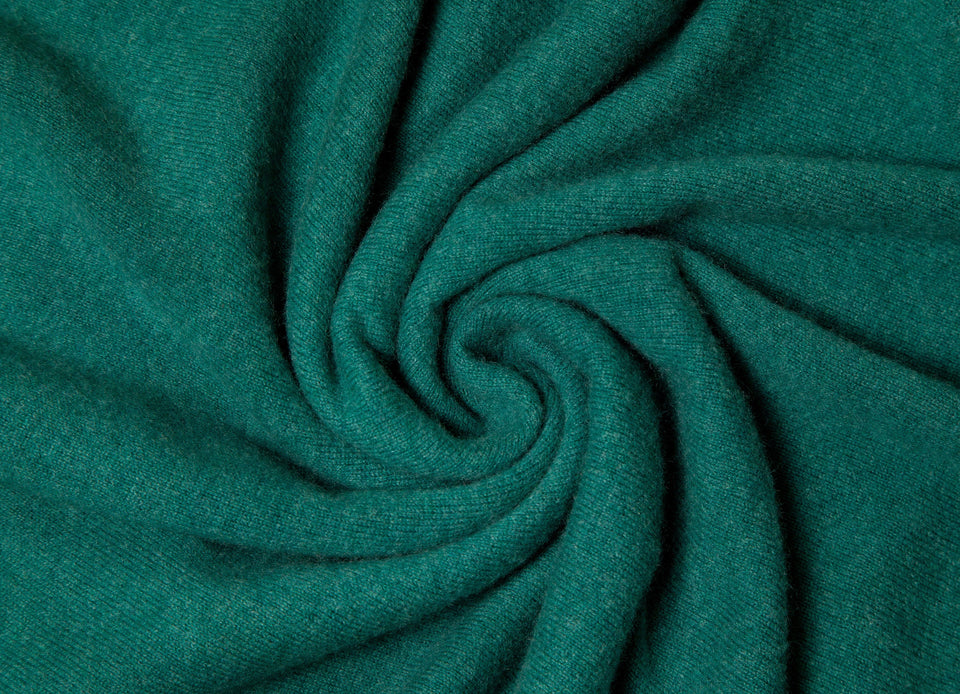
Sometimes, you will find that cashmere has been blended with other popular wool types. It is common to find cashmere shirts, sweaters, socks, cardigans, and more that are blended with Merino wool. Usually, there is more wool in the garment than cashmere, sometimes making them more itchy.
That said, these garments tend to have excellent thermal abilities, are durable, soft to the touch, and much cheaper than 100% cashmere.
Synthetics and Cashmere
Although cashmere is rarely blended with synthetics, it does sometimes occur. This is usually not the ideal mixture for clothing and may not be as insulating as other cashmere blends. However, socks made of cashmere and polyester or nylon are very durable and may be a practical choice.
Are Cashmere Blends a Bad Thing?
A cashmere blend doesn’t always mean a lesser quality garment or fabric. For instance, how would you compare a 100% grade C cashmere sweater to a silk-cashmere blend using grade A cashmere?
When evaluating an item that is a cashmere blend, look for fabrics that have been blended with Grade A pure cashmere.
If you are shopping for a cashmere sweater, consider a silk-cashmere blend that may hold its shape better than a pure cashmere sweater. Or perhaps a wool-cashmere blend if you want an item that is very durable.
Remember to play to the strengths of cashmere-blended items. For instance, a silk cashmere shirt may not be quite as soft as pure cashmere, but it will have an elegant sheen and it’s more likely to keep its shape. A cotton cashmere blend makes the clothing more breathable and lightweight without sacrificing the softness of cashmere that so many people love.
Cashmere blends aren’t exclusively used for clothing. Cashmere is commonly blended with other fabrics to create bedding, upholstery, pillow cases, home décor, and more. A cashmere-blended fabric can bring softness and insulation to many items around the home.

100% Cashmere Isn’t Always the Best Choice
Choosing 100% cashmere over a cashmere blend isn’t always straightforward. The best choice depends on the grade of the cashmere used, the fabric it is being blended with, and your purpose for the item.
But now, you have all the information you need to make the best choice for you.
